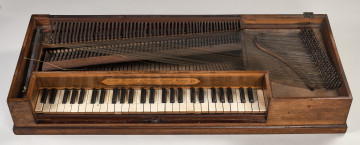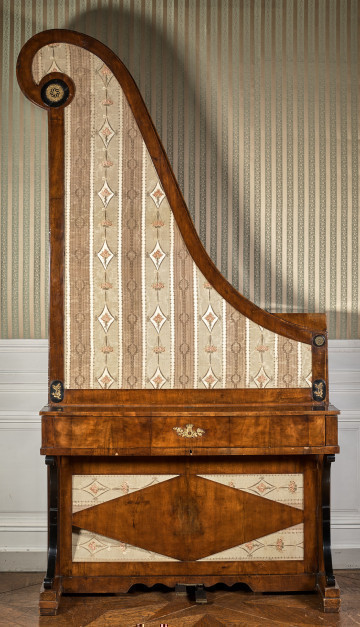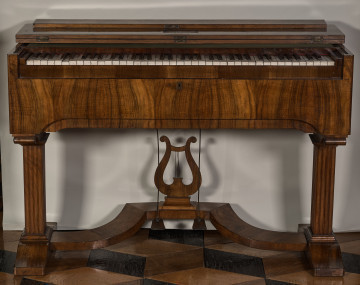
Square piano
1785
Castle Museum in Łańcut
Part of the collection: Weapons, music instruments, varia
The harp is a stringed musical instrument known since ancient times (chordophone). Modern interest in the instrument has been revived since the time of the French Queen Marie Antoinette - a proficient harpist and a talented pupil of Christoph Willibald Gluck. Following her example, playing the harp became a desirable skill amidt European aristocracy. Among the coveted, appreciated, and eagerly bought instruments were those made by Georges Cousineau (1733-1800), the royal violin-maker and music publisher, who ran a shop opposite the Louvre. Since 1775, his son Jacques Georges (1760-1836) - a concert harpist appointed violin-maker to the queen - became his business partner. Izabela Lubomirska, who had close relations with the French court, bought a Cousineau harp for her 10-year-old foster-son Henryk Lubomirski, who was taking harp lessons. Playing music in small, amateur chamber ensembles was one of the social customs of the time. It was no different in Łańcut. After the death of the Princess Marshal, the harp went to Przeworsk, property purchased for Henryk, where it remained until the II World War. In 1967, the Museum-Castle purchased another harp made by the Cousineau father and son at the end of the 18th century. The instrument is signed with the inscription "Cousineau pére et fils á Paris" placed on the resonator box. The number '89' was placed on the volute finish of the neck with tuning pegs. Cousineau's harps stood out because of their beautiful deep sound. They were perfected by numerous patented inventions, such as pedals that shift the sound by a semitone through a mechanism that adjusts the tension of the strings. Despite this, Cousineau's instruments had a delicate structure. Over time, they lost the competition to Sébastien Érard's patents, thanks to whom the harp was elevated from a home instrument to a concert one.
Teresa Bagińska-Żurawska https://orcid.org/0000-0002-9243-3967
Author / creator
Object type
musical instruments
Technique
construction of musical instruments
Material
Pinewood, meadow, cattle bone, brass, gold, sycamore wood, animal intestines
Creation time / dating
Creation / finding place
Owner
Muzeum - Zamek w Łańcucie
Identification number
Location / status

1785
Castle Museum in Łańcut

1820 — 1830
Castle Museum in Łańcut

1830 — 1833
Castle Museum in Łańcut
DISCOVER this TOPIC
National Museum in Szczecin
DISCOVER this PATH
Educational path